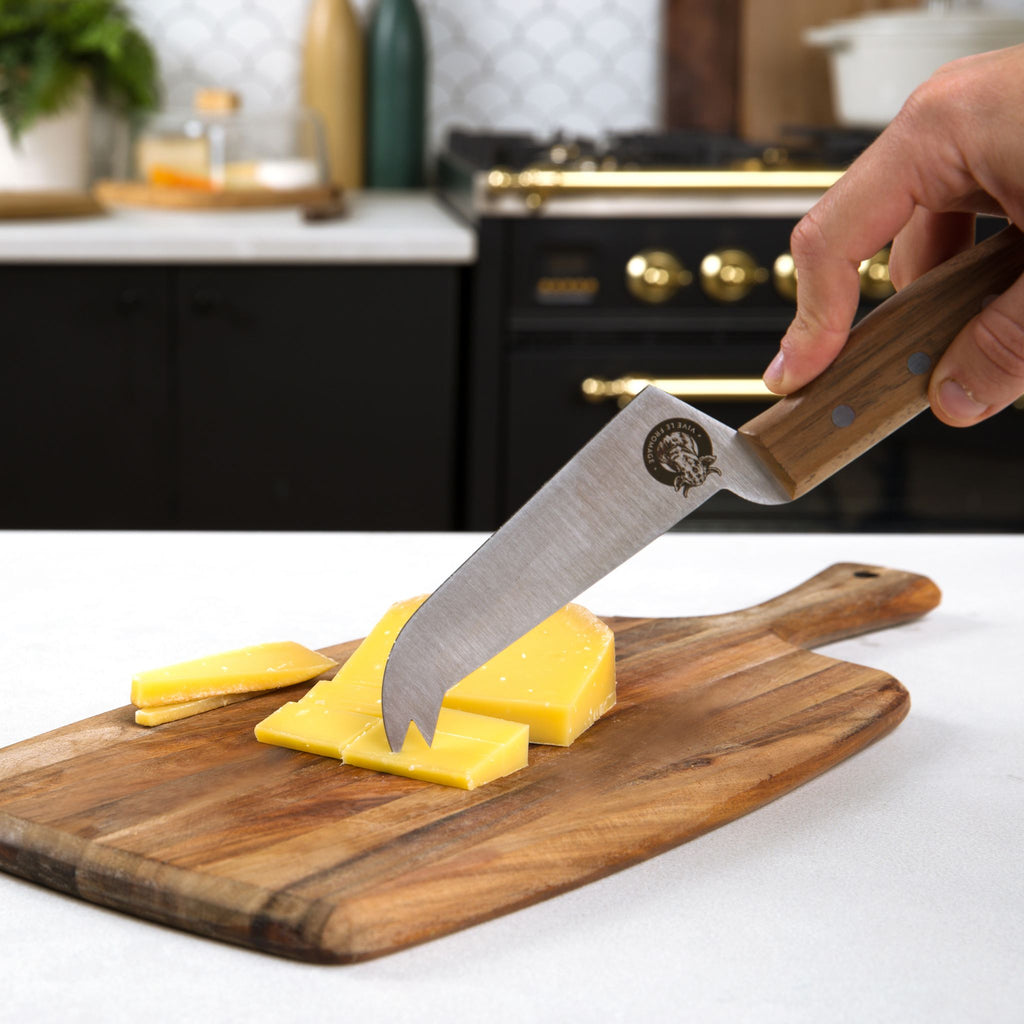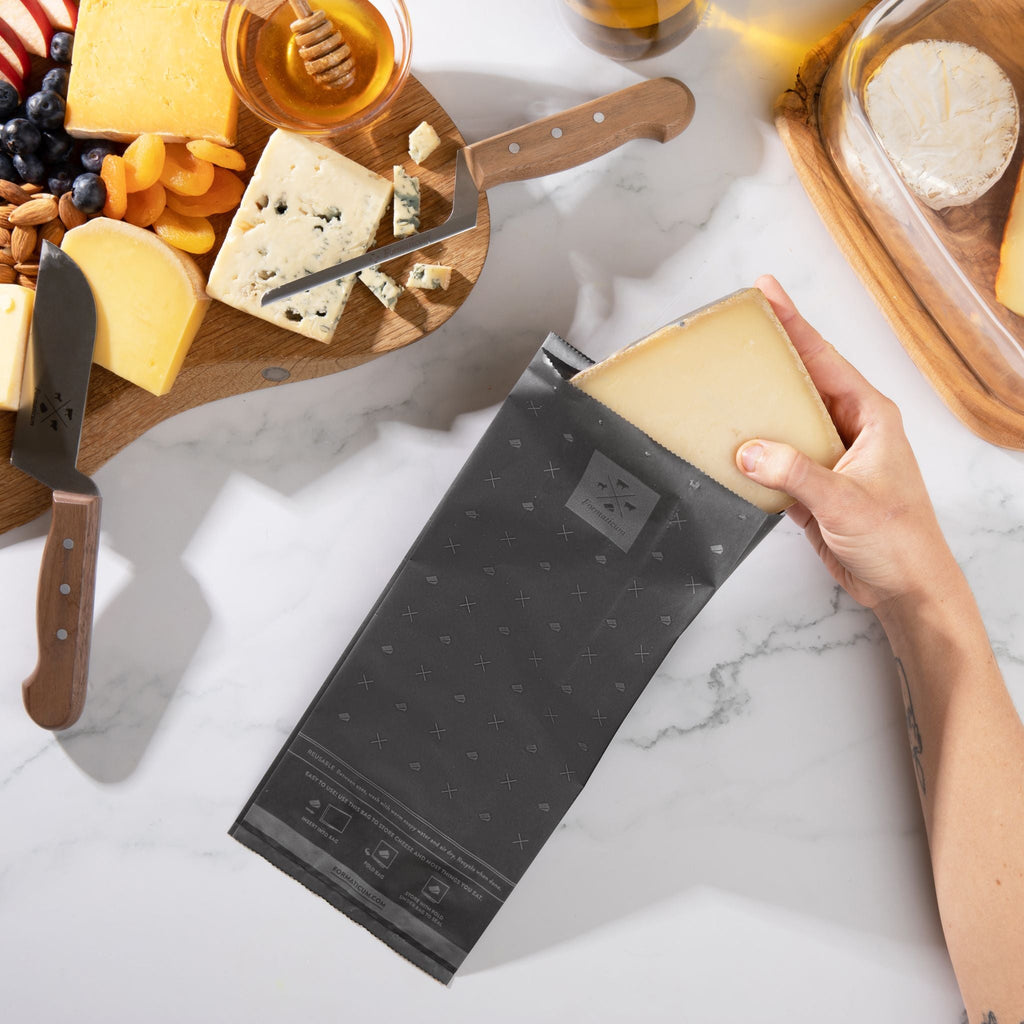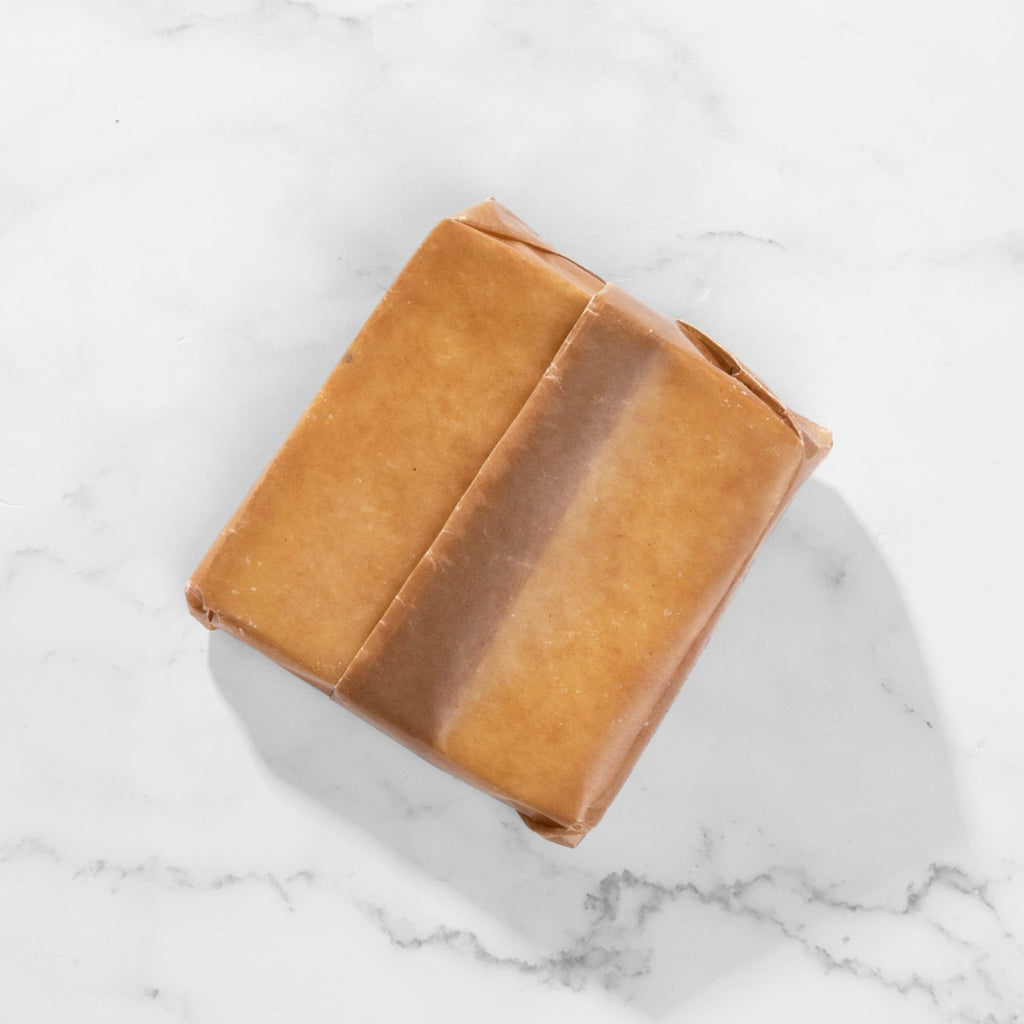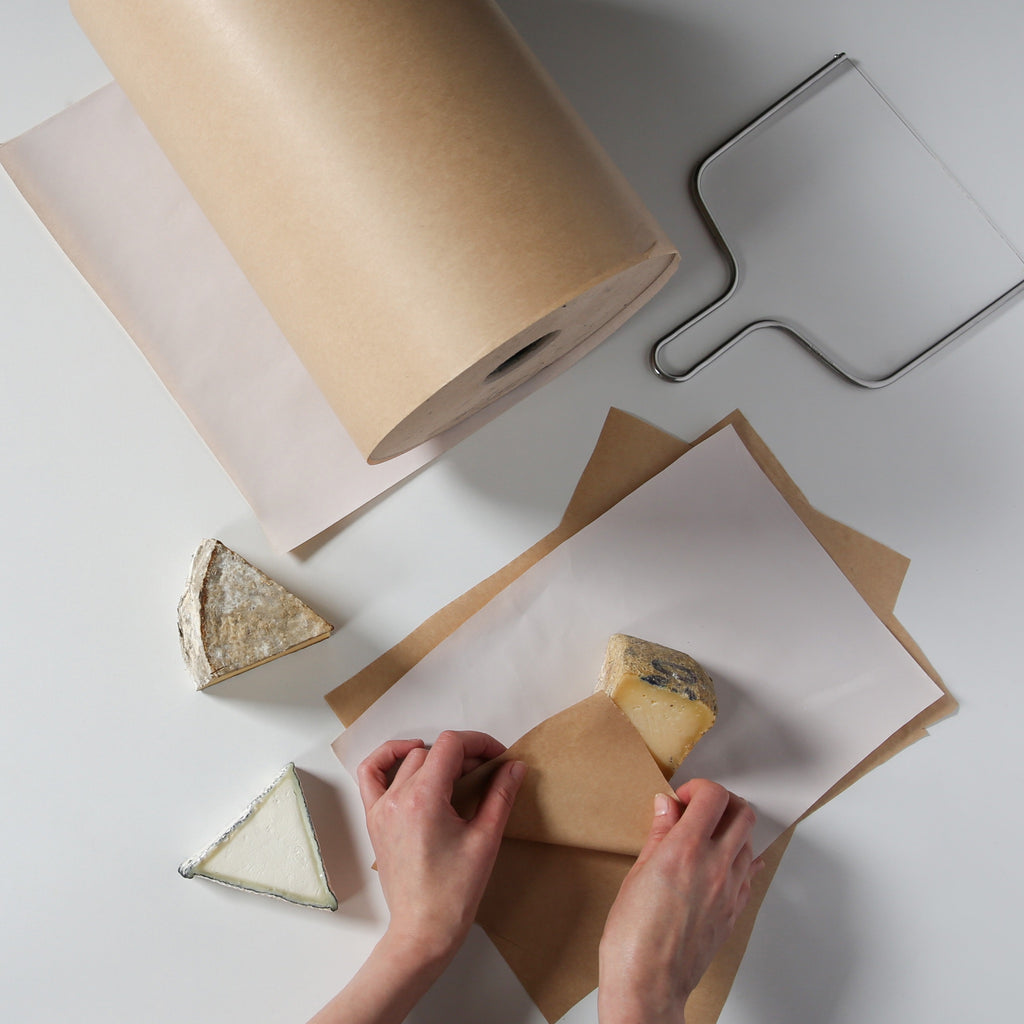"Grass-Fed" - What Does It Mean for Cheese?

Recently, you may have noticed the term "grass-fed" popping up on the packaging for cheeses, fresh meat, and even milk. It has become a powerful marketing term, albeit one that consumers may not have a complete understanding of. When it comes to cheese, there are a few important things you should know in terms of its significance and effect on a product's quality and flavor.
The first thing to remember is that "grass-fed" is not immediately an indicator of quality. Remember, animals that are pastured (have access to fresh grass) likely will not have access year-round! For example, the hardworking girls at Shelburne Farms have "direct access to the salad" (as our tour guide put it) during the months when it is not covered in that heavy Vermont snow. During the winter, the animals may switch to a diet of dried hay, which was harvesting during the sunny months to ensure that the cows will have a nutritious diet during the winter. Eating hay and/or silage will impact their milk composition (winter milk is generally higher in fat!), but does not necessarily mean the resulting cheese is of a lower quality.
That being said, grass-fed dairy products are naturally higher in beneficial fatty acids and CLA (conjugated linoleic acid) that are linked to heart and brain health, as well as fat loss and prevention of cancer and other diseases.
So what impact does a diet of fresh grass have on a cheese? Grass contains betacarotene, which is the compound responsible for vegetables like carrots being orange. Betacarotene is fat soluble, meaning the pigment is passed through to the milk, and can give the resulting cheese a deep, rich yellow color. The more grass the cow eats, the more intense the color. You can learn more about the science of cheese color by reading this post from Cheese Science Toolkit, one of our favorite cheese education resources.
It's important to note that while this may be true for cows, goats do not metabolize betacarotene the same way - their bodies break it down into Vitamin A instead, which is why goat's milk cheeses are generally paler or even stark white.
Flavor-wise, the difference is notable. A diet of fresh grasses, herbs, flowers, and other forage means that the milk will have more complexity of flavor, as the flavors of whatever the animal is eating will come through in the cheese. This is called the terroir of the milk, or, the way the animal's environment affects the final flavor of the product. This concept is especially prominent when we discuss alpage cheeses, or cheeses made exclusively with high-altitude summer milk in the Alps. These cheeses are prized for their nuanced flavor and golden color - truly a taste of the mountain terroir!
This means that the same cheese can look and taste very different at different times during the year, which is one of the benefits of small-batch high-quality artisan cheese. Your cheesemonger should be able to identify these changes that will vary from batch to batch, and will be able to direct you towards a cheese that will satisfy your needs!
Cheese is a living product that needs to be cared for properly to honor the work of the makers - just as milk composition changes seasonally, cheesemakers adjust the cheesemaking process to accommodate the seasonal fluctuations, and affineurs must anticipate nuances in the aging process to make sure the cheese is ripening under the right conditions. It's very detailed work, and caring for cheese is no different! Formaticum offers a variety of bulk wrapping materials to suit every cheese style - from plant-based Cellophane for geotrichum-rinded cheeses to One-Ply Rolls for versatility to Super Wax sheets for blue cheeses, we have everything you need to keep your cheeses in peak condition for your customers.
Interested in opening a wholesale account with us or inquiring about custom-branded cheese paper? Email wholesale@formaticum.com for more information, and don't forget to follow us on Instagram for more cheese education content.
Earth Month Tips for a More Sustainable Cheese Counter

April may be Earth Month, but at Formaticum, we have always been committed to sustainability no matter what time of year it is. That's why our founder has sourced wrapping materials that are free from plasticizers, PFAs, and BPAs, as well as making sure that we offer a variety of plastic-free and compostable materials. But sustainability goes beyond cheese paper, which is why we've put together a list of ways to improve sustainability practices behind your cheese counter.
1. Switch to a plastic-free or Reusable wrapping material for cut-to-order cheese. We offer a variety of materials and colors to suit different styles of cheese - for example, compostable Zero is best for washed rinds and aged cheeses, while Brown Alios and Greaseproof Sheets work wonders for blue cheeses, butter, and charcuterie. Wrapping bloomy rinds and geotrichum-rinded cheeses in our plant-based Cellophane will allow them to breathe and won't damage their delicate rinds the way plastic wrap will. Wrapping your cheese in the right material will keep it healthier, longer, ultimately reducing waste.
2. Wrap and store your backstock and larger display pieces in cheese paper instead of plastic wrap. Not only will this preserve the flavor and quality and extend the shelf life, but it will also reduce waste, since you will not need to face and rewrap the cheese as often, as our paper slows the growth of surface mold. We recommend large sheets of our new Reusable Wrap or a roll of One-Ply.
3. Reduce food waste by using less-than-perfect herbs, vegetables, fruit, etc. to make added value products like compound butter or flavored cream cheese. Use cheese approaching its Best By Date to make small Grab & Go cheese plates on our biodegradable Wood Trays. Shred older cheeses for a housemade Mac & Cheese or Fondue Blend, and sell Parmigiano Reggiano or Grana Padano rinds separately for your customers to use in soups and sauces.
4. Offer your customers sustainable ways to store cheese at home instead of using plastic wrap or plastic bags. Consider stocking compostable Zero Cheese Storage Bags & Sheets in retail packaging to provide your customers with an easy-to-use solution and also raise your basket averages. Aside from being incredibly user-friendly, our plastic-free Zero Cheese Storage Bags and new Reusable Cheese Storage Bags are better for the earth and better for the cheese!
5. Know who you are buying product from. Talk to your distributors and producers to learn their practices and decide if their values are in line with yours. Understand that you are representing their values by selling their product. Try to source cheese from producers and farmers who are committed to sustainable practices, such as regenerative farming & agriculture, plastic-free packaging, climate action planning, equity and diversity work, community education and service, land and wildlife preservation, and ethical treatment of animals….just to name a few.
Learn more about Formaticum products on our FAQ page and reach out to wholesale@formaticum.com with any questions or comments.
Best Materials for Wrapping Butter

As cheesemongers, we are responsible for more than just cheese. The definition of a cheesemonger is someone who handles butter, cheese, and other dairy products - and while cheese is certainly at the forefront, butter should also be treated with just as much care and attention.
After all, butter is sometimes a byproduct of cheesemaking and represents the hard work of humans and animals alike. But not all butter is created equal - many well-known cheese producers also make butter, and in staggering varieties - salted, unsalted, cultured, sweet cream, whey cream, flavor added…some European butters are even named protected!
Adding a cut-to-order butter to your counter is not only visually exciting but also convenient, and allows your customers to buy only what they need, when they need it, ensuring freshness. Adding a variety of different butter styles, even in retail packaging, ensures your customers can get exactly what they need, whether they are cooking, baking, or just snacking on a well-made baguette.
You may also consider making and selling compound butters with seasonal ingredients like ramps or Calabrian chilies. This is a great way to reduce food waste and provide your customers with a great added value product.
No matter what kind of butter you stock, you will need the right packaging. Formaticum's packaging offerings extend beyond cheese - we also carry many bulk wrapping materials that are perfect for butter! Each one of the materials mentioned below is imported from France, a country well known for its excellent butter.
Our Super Wax sheets are leak-proof and allow your customers to see the product inside, while Brown Alios provides that classic French kraft brown look while preventing butterfat stains. Even High Lawn Farm in Lee, MA uses our Greaseproof Sheets to wrap their butter and keep it looking and tasting as fresh as the day it was made. Plus, all of these materials are plastic-free and commercially compostable, and do not contain PFAs, BPAs, or BPH, making them a great addition to your store, especially during Earth Month.
Click here to browse our full catalog of wrapping materials and request samples!
Email wholesale@formaticum.com with any questions.
Cheese Triage: The Formaticum Difference

Cheese case maintenance should be the first thing the opening monger does in the morning, and the last thing the closing monger does before turning the lights out in the case. But proper cheese care and maintenance goes beyond just straightening signs and glass wrapping - cheese is a living, breathing, gastronomic miracle that should be treated with respect! Keep reading to learn some tips from the Formaticum team on how to keep your cut-to-order cheese happy and healthy.
1. Rotate your cheeses properly to ensure they are sold in a timely manner. Don't over-order in certain categories, and be careful when putting out several cheeses of the same style so that they don't compete with each other in the case and prolong the time they spend on display in plastic wrap. Use a Date Log to keep track of when wheels were first opened, and how long they've spent in the case, and a Push/Pin list can help your mongers know which cheeses to focus on to move them more quickly if they've been in the case a bit too long. Use your weekly case cleaning as an opportunity to reset the display and move cheeses to the front that you need to sell more quickly.
2. Consider wrapping larger display pieces or back stock in Formaticum cheese paper instead of plastic wrap. Plastic wrap will suffocate the cheese and impart off flavors, and the longer it stays in contact with the cheese, the more intense the effects will be. Our One-Ply Roll is perfect for wrapping half and quarter wheels, and is also available in 20" so that you can store even your largest pieces, like 1/8th and even quarter wheels of Gruyère and Comté.
3. Cheese should be faced and rewrapped daily. Remember, customers eat with their eyes first! Any visible mold on the face of the cheese may deter your customer from ordering. Cheesemongers and microbiologists agree - when it comes to surface mold on harder cheeses, it is both safe and recommended to gently scrape the surface to clean the mold, or cut off a bit of the affected side before rewrapping or cutting for a customer. Plus, wrapping cheese in Formaticum cheese paper will slow surface mold growth and help preserve the cheese longer than plastic wrap.
4. Different cheeses require different types of wrapping materials! Bloomy-rinds and geotrichum rinds require more oxygen to thrive, making our plant-based and plastic-free Cellophane an ideal material to keep them happy in a full serve or grab and go case. One-Ply and Two-Ply sheets are versatile and great for all cheese styles, while fresh and blue cheeses are best kept in sturdier materials like Reusable Wrap, Super Wax, and Brown Alios, which are greaseproof and will prevent leakage.
5. Provide the best possible experience for your customers by wrapping their cheese in Formaticum paper. This will help to preserve the flavor they loved at the counter and keep the cheese fresh in their fridge for as long as possible. Consider offering retail products like Classic or Reusable Cheese Storage Bags so that your customers can have professional-quality cheese storage in their own homes!

The proof is in the paper. Honor the cheesemakers, save your cheese - with Formaticum cheese storage solutions. Order products for next business day shipping at wholesale.formaticum.com and email wholesale@formaticum.com with any questions.

Formaticum News
Our home to share our cheese chronicles and more.
Categories
Recent Posts
Cheesemonger Champions: Team USA's Journey to the Mondial du Fromage 2025
Beyond the Paper: Exploring the Formaticum Catalog
A Cheesemonger's Guide to Formaticum's Bulk Wrapping Materials
Upcoming Events
Connect with Us
Join the Newsletter
Sign up to receive special offers, new product releases, updates from the cheese shop, and more.
